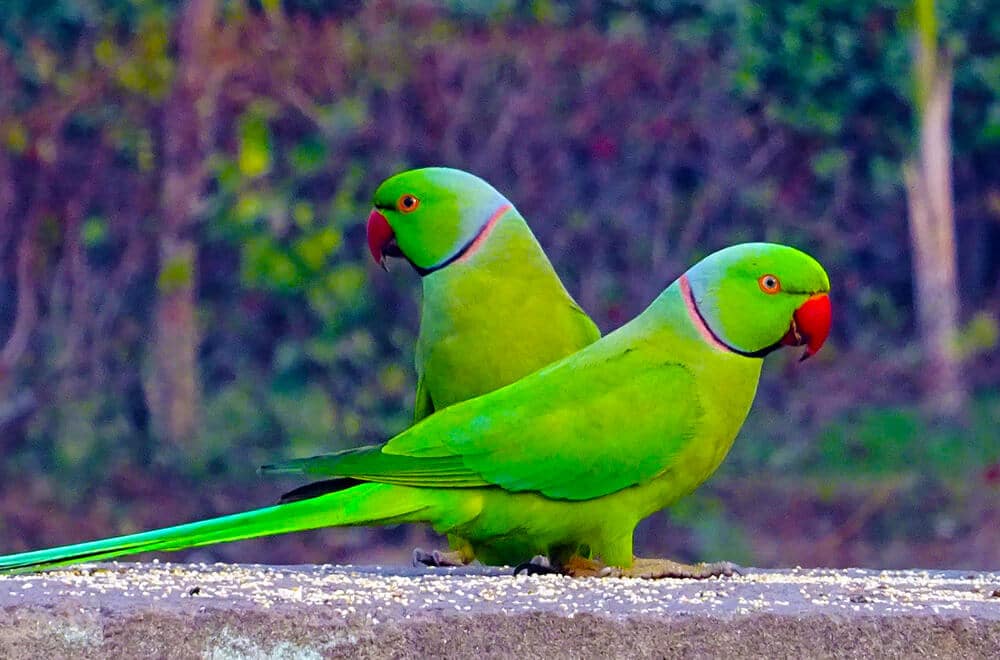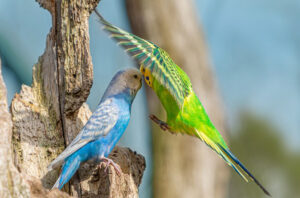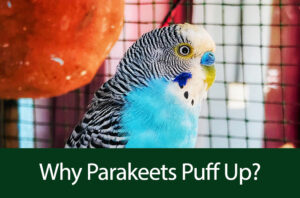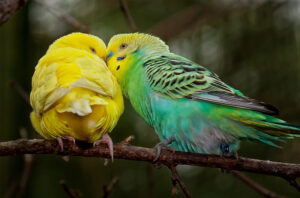The Indian Ringneck parakeets, also called the Rose-ringed parakeet, are popular companion birds that have been kept as pets for decades. As the name suggests, these lovely parakeets originated from India where it is still found in great quantities both in the wild and in urban areas.
Indian ring-necked parakeet are the type of parrots that enjoy a social life and therefore does well in the hand of an owner that appreciates a talkative parrot. These parrots are highly intelligent and enjoy learning new things. These lovely birds will appreciate if you provide them various toys.
These beautiful parrots are quite talkative and need an attentive caretaker who will be ready to spend enough time with them. You can read how to take care of your parrot pets to learn a few tips.
General information about the Indian ringneck parakeets
- Scientific name: Psittacula krameri
- Common names: Indian ring-neck parakeet, Indian ring-neck parrot, rose-ringed parakeet
- Average life span: 25-30 years
- Average size: 14-17 inches (36 – 43 cm)
- Weight: 95-143g (smaller than Alexandrine parakeets).
- Color: Indian ring-necked parakeets are available in shades of color ranging from bright yellows, blues, and greens, to cinnamons, albinos, and lutinos. Although color mutation is common among these parrots, the normal coloring of the birds is bright lime green. They also have yellow markings under their wings and blue tail feathers. Indian ring-necked parakeets are also dimorphic, which means the sex of the bird can be determined by its colors and markings.
Interesting Facts about Indian ringneck parakeets
- Indian ring-necked are dimorphic. This means the male and the females have distinctly different colors and markings.
- These parrots might cause some trouble during adolescence.
- The Indian ring-necked parakeets are excellent talkers.
- Indian ring-necked can be destructive chewers.
- They are known to be great at learning tricks
What should you feed your Rose-ringed parakeet?
These parrots are the type that tends to have a higher appetite than other parrots.
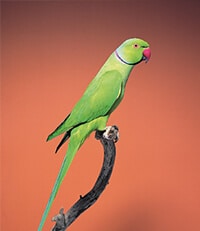
Also, remember to provide them with food and water in fresh clean bowls whenever you are feeding them.
How to take care of your lovely parakeet.
These birds are sensitive birds that require plenty of playtimes and will require to spend some time out of the cage in order to stay happy and healthy. When they are being deprived of these, they tend to develop neurotic disorders that may be very difficult to reverse.
With adequate attention, love, and handling, an Indian ring-necked parakeet can quickly become a lovely pet and companion. They enjoy learning new things and so enjoy staying with owners who are ready to challenge their intelligence.
They require a relatively large-sized cage – big enough to contain their long tail. Ensure the bar spacing of the cage is, however, not too large that it gets them stuck in or provide an escape route for the. They love playing with their toys and so you should provide enough toys for them to hang on and toss around in the cage.
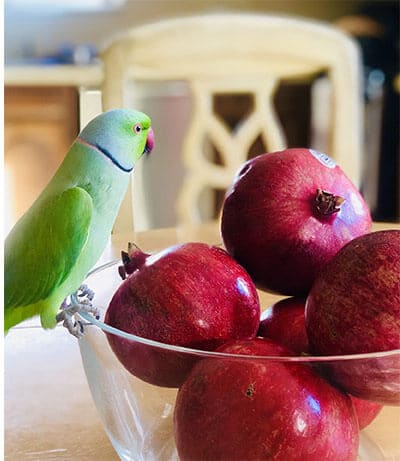
Providing a dish of water and a mister to bathe is also a great idea to make sure your feathered friends stay very friendly and happy.
Indian Ring-necked Parakeet as a pet
Indian ring-necked parakeets are lovely birds to behold. Coupled with their great intelligence, they easily do make great pets. They find it really fun learning new tricks and also loves to show off. Their talking ability is exceptional.
With adequate handling, attention, and love, the Indian ring-necked parakeets can quickly become a lovely companion that all the family members will love.
Indian ring-necked parrots usually do well in an environment with a temperature of about 83°F (28°C).
Indian Ring-necked in the wild
In the wild, these birds live in slightly timbered areas and farmed areas of the countryside. They fly together in flocks of about 100 or more birds in search of foods. When in the wild, these parrots enjoy each other’s company and hence enjoy flying and flocking together.
These colorful birds usually love to eat vegetables, fruits, berries, nuts, and seeds when in the wild. They also enjoy eating flowers as well as the nectar that comes from such flowers.
Quick facts about breeding Indian Ring-necked parrots
These birds usually bread once in a year (usually between February and March) but in some cases, they can also breed two times in a year. Breeding season is not constant as it varies from geographical location to another.
Although most parrot species mate for life. That is not the case of the Indian ring-necked parakeets.
They make their nests in hollows of trees, where they use their beaks and claws to make the escalation. They also often take advantage of holes in old walls and buildings to make their nests.
Ring-necked parrots lay about 2 to 6 eggs per clutch with an incubation period of approximately 22 days.
Young Indian ring-necked parrots are ready to fly at 6-7 weeks.
How much does the Indian Ring-necked parakeet cost?
The price of one of these birds could vary from $450 to $500. And sometimes, you can expect to pay up to $750 depending on the bird characteristics.
Adopting a parakeet
Indian ring-necked parakeets are fairly common in the United States and they can be adopted, purchased, or rescued at verified organizations such as RescueParrots.org or on some adoption sites like Petfinder.
These parrots make a lovely pet because of their colorful plumage and excellent intelligence and speaking ability. However, they are social birds and so requires lots of time from their owners.

